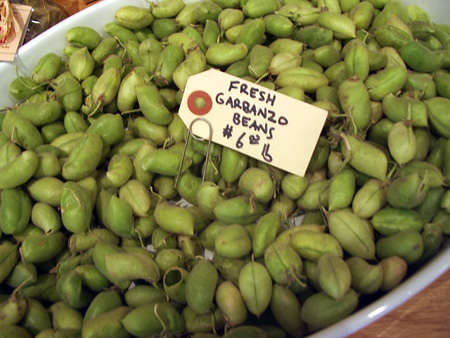
What does your food look like before it gets to you? I'm not talking about shady factory-farming practices or the difference between the sunny farm on that bag of spinach versus the vast monocropped acreage of the Central Valley. No, I'm talking about something more basic: how well do you do know how familiar foods grow? Close your eyes, and imagine a field growing okra, kiwi, peanuts, or rhubarb: what do you see?
Last year, visiting the Post Familie winery in northwest Arkansas, I spied what I thought were tall, pretty flowers growing among the beans and tomatoes in the family garden. Up close, those six-foot-tall flowering stalks turned out to okra plants, with the sharply pointed pods curving back behind the wide petals. I didn't know until I became an apprentice at UCSC's Farm & Garden program that kiwis were harvested in the winter from thick, heavy vines, trellised like grapes. Or that asparagus spears push straight out of the bare ground, later unfurling into lacy, fernlike fronds that look like fairy-sized Christmas trees dappled with red berries.
You never know when a little bit of education will take you by surprise. I was taking a Sunday-afternoon stroll along Cortland Street, looking forward to the April 9 opening of Blue Elephant Thai in the old Tinderbox space, admiring Heartfelt's cute aprons and vintage glassware ("have a lemonade party!" suggested a cheery sign) and contemplating a daytime cocktail down in the secret garden of Wild Side West, only to be overtaken by a yen for Fiat Majani chocolates. When I lived in Bologna, I used to go around the corner to buy these suave hazelnutty squares, a specialty of the city; now, on the other side of another continent, they're still available around the corner, at Avedano's Holly Park Market.
Butchery is Avedano's reason for living (whole carcasses broken down weekly, the latest issue of Meatpaper on display, "I Love You More than Bacon" buttons by the register) but they're pretty savvy at filling out the menu with Italian chocolates, fresh baguettes, eggs from Soul Food Farm's happy hens, even a few baskets of well-polished potatoes and lemons.